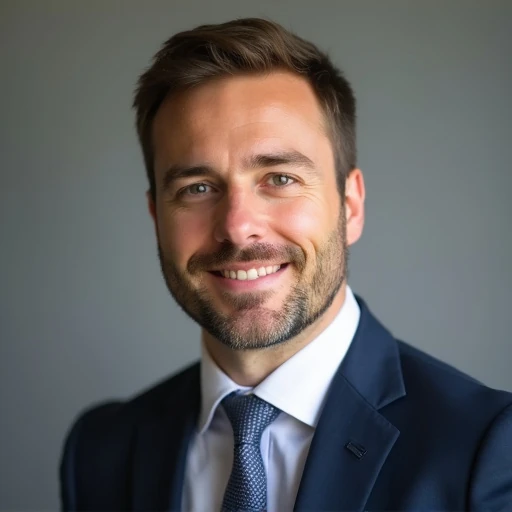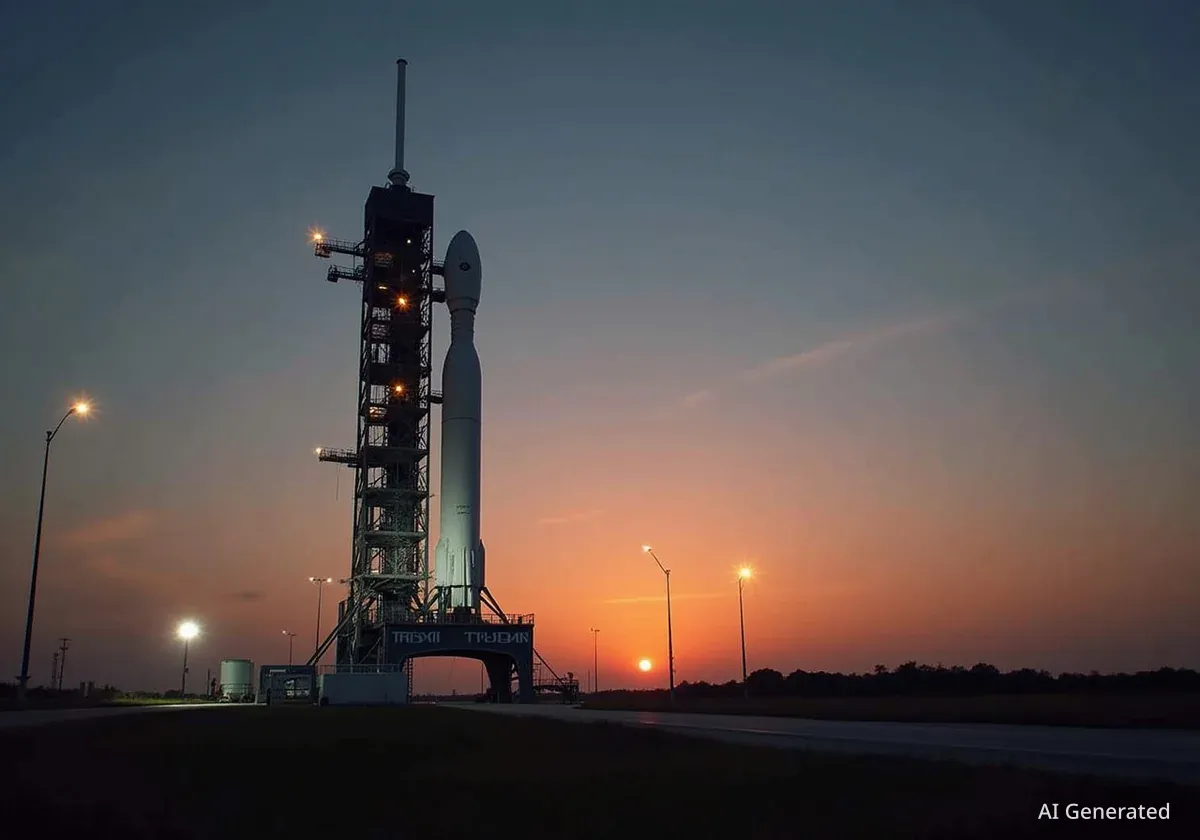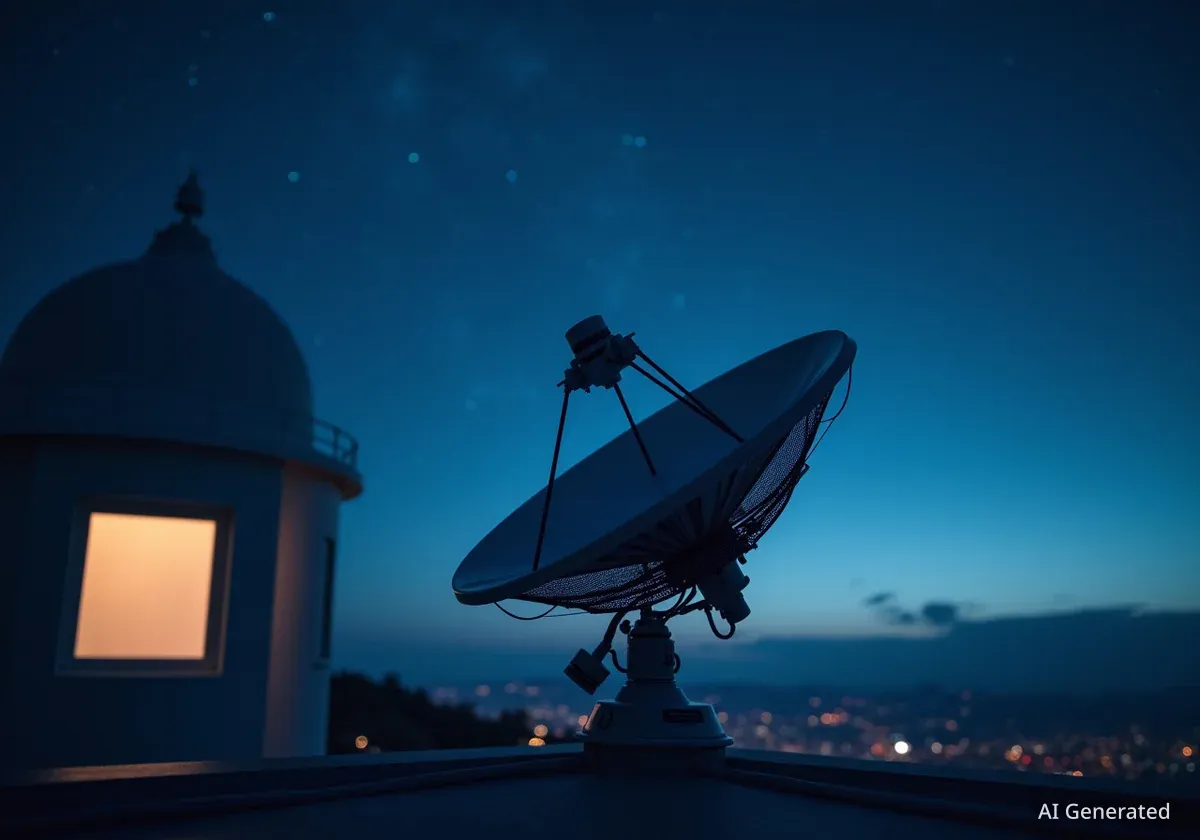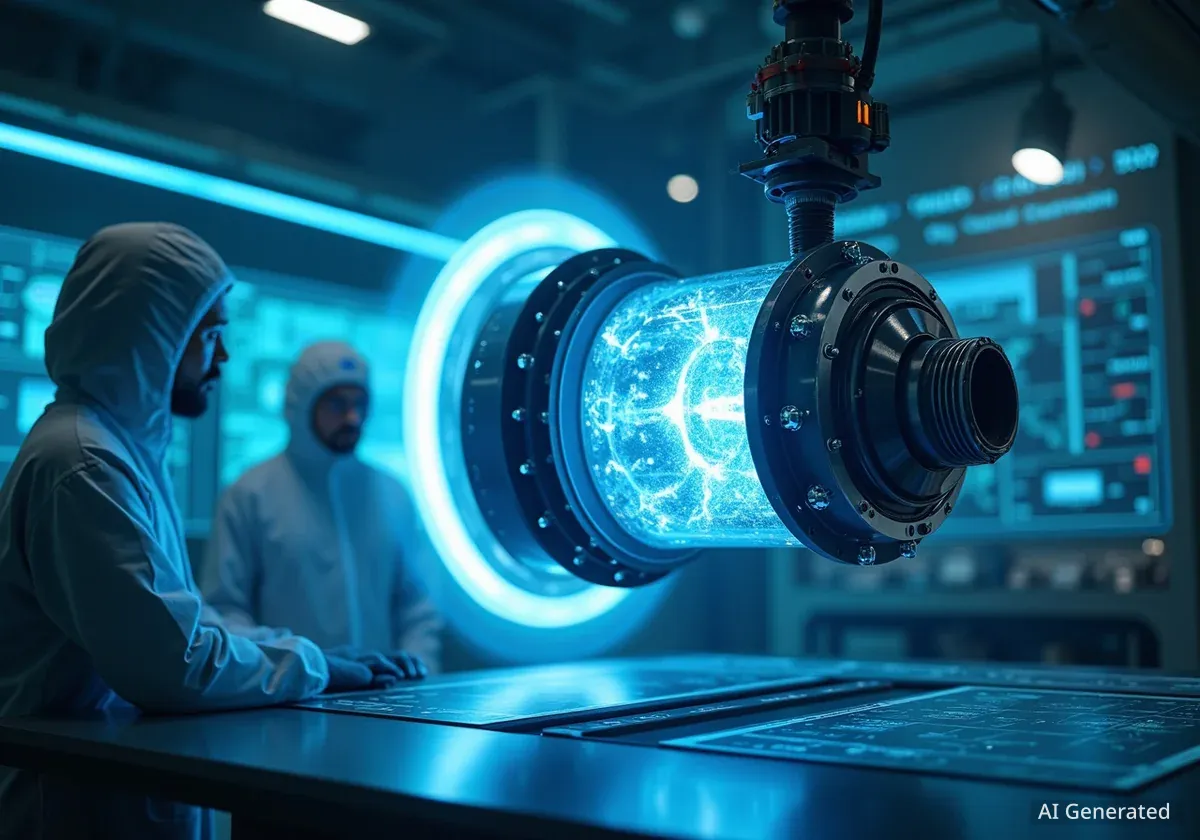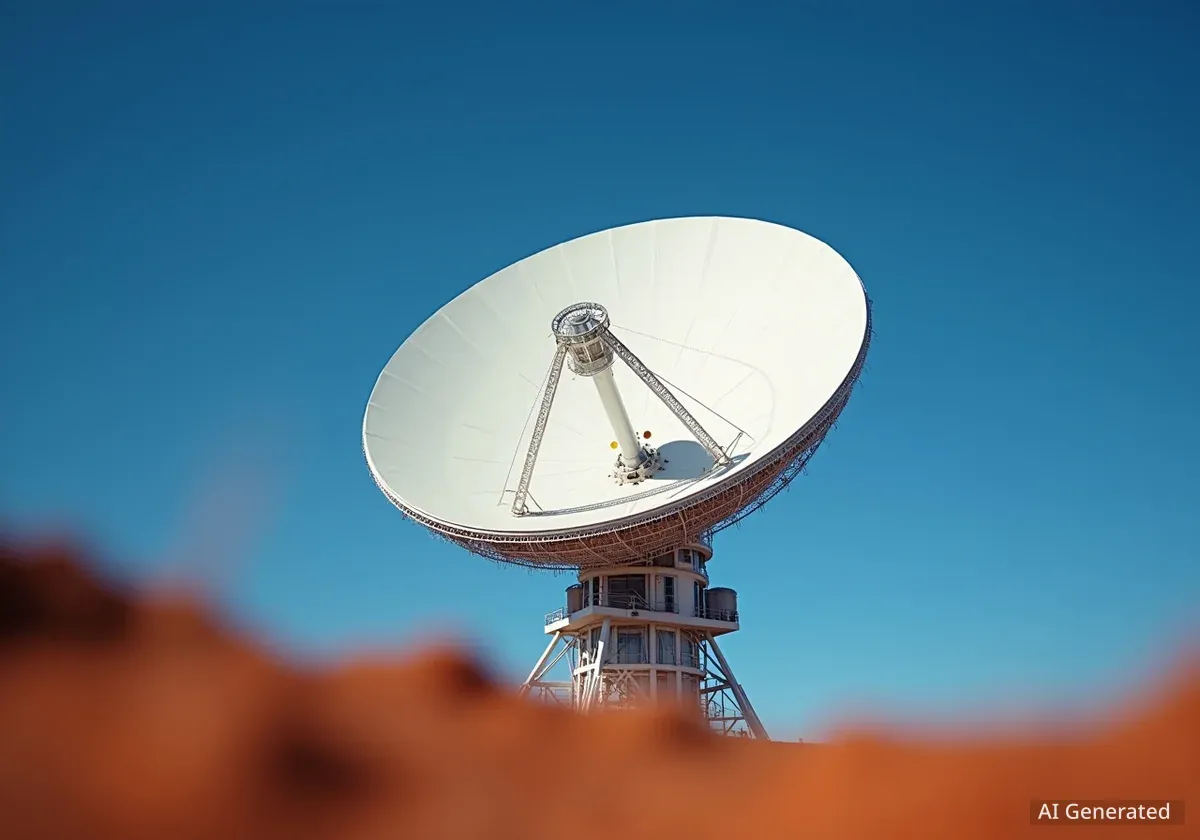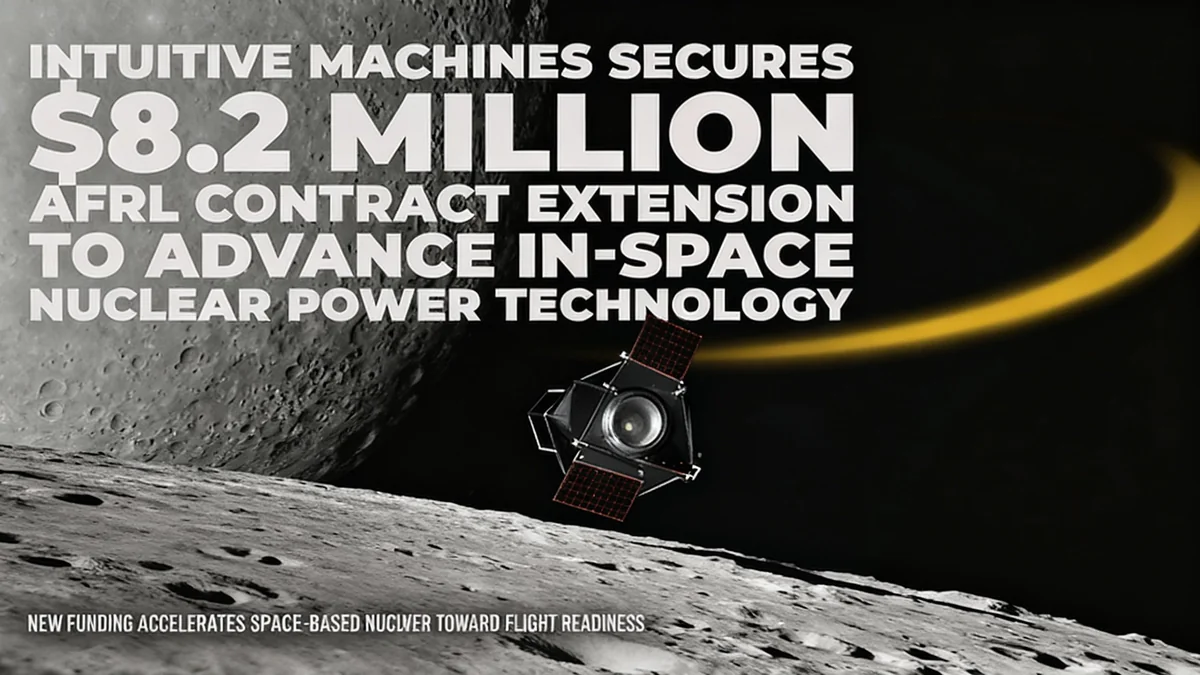SpaceX is preparing for another rocket launch from Florida's Space Coast. The company has scheduled a Falcon 9 rocket to lift off from Cape Canaveral Space Force Station on Monday, October 13, carrying the KF-03 mission into orbit. The launch is planned from Space Launch Complex 40 (SLC-40).
Key Takeaways
- Mission: SpaceX is set to launch the KF-03 mission to orbit.
- Vehicle: The mission will use a flight-proven Falcon 9 rocket.
- Launch Site: Liftoff will occur at Space Launch Complex 40 (SLC-40) in Cape Canaveral, Florida.
- Date and Time: The primary launch window opens at 8:08 p.m. ET on Monday, October 13, and closes at 10:22 p.m. ET.
- Booster Recovery: The first stage booster will attempt a landing on the 'Just Read the Instructions' droneship in the Atlantic Ocean.
Launch Details and Timeline
SpaceX has confirmed its launch schedule for the upcoming KF-03 mission. The primary launch opportunity is set for Monday evening, with a window that provides flexibility for favorable weather and technical conditions. According to the official schedule, liftoff is targeted for 8:08 p.m. Eastern Time.
To ensure the mission's success, SpaceX has reserved a launch window that extends for over two hours, concluding at 10:22 p.m. ET. This allows the launch team to address any last-minute issues that may arise during the countdown.
In the event of a delay, a backup launch opportunity has been arranged for the following day. The backup window is scheduled to open on Tuesday, October 14, at 7:46 p.m. ET. This contingency planning is a standard part of modern launch operations, maximizing the chances of a successful liftoff.
The Role of Space Launch Complex 40
Space Launch Complex 40 (SLC-40) is one of SpaceX's primary launch pads on the East Coast. Originally built for the U.S. Air Force's Titan rocket program, the site has been leased and extensively modified by SpaceX since 2007. It now serves as a high-frequency launch facility for Falcon 9 missions, supporting a wide range of payloads from commercial satellites to government missions.
A Focus on Reusability
A key element of this mission is the continued use of flight-proven hardware. The Falcon 9 first stage booster assigned to the KF-03 launch is making its second trip to space. Its previous mission was the successful launch of KF-02, demonstrating the reliability and efficiency of SpaceX's reusable rocket system.
The practice of reusing first stage boosters has significantly changed the economics of space access. By recovering and relaunching these powerful components, SpaceX has been able to reduce costs and increase its launch frequency, making it a dominant force in the global launch market.
The Landing Procedure
Following stage separation, which occurs a few minutes after liftoff, the first stage booster will perform a series of engine burns to reorient itself for a controlled descent back through Earth's atmosphere. Its target will be the autonomous droneship, Just Read the Instructions, positioned hundreds of miles offshore in the Atlantic Ocean.
This automated landing is a complex maneuver that relies on GPS guidance, grid fins for steering, and a final landing burn to slow the booster to a gentle touchdown. A successful landing allows the booster to be returned to port for inspection, refurbishment, and preparation for a future mission.
The Economics of Reusability
According to industry estimates, the first stage of a Falcon 9 rocket accounts for approximately 60% of the total vehicle cost. By successfully recovering and reusing this component multiple times, SpaceX dramatically lowers the financial barrier to space, enabling more frequent and diverse missions.
The Falcon 9 Rocket
The Falcon 9 is a two-stage, medium-lift launch vehicle designed and manufactured by SpaceX. It stands as the world's first orbital-class reusable rocket. Since its debut in 2010, the Falcon 9 has become a workhorse for both government and commercial clients, launching satellites, cargo, and astronauts into orbit.
The rocket's first stage is powered by nine Merlin engines, which generate more than 1.7 million pounds of thrust at sea level. The second stage, powered by a single Merlin Vacuum engine, is responsible for placing the payload into its final orbit after separating from the first stage.
The KF-03 mission, like many before it, will leverage the proven capabilities of the Falcon 9 to deliver its payload precisely. While details about the KF-03 payload are not specified, Falcon 9 is capable of carrying a wide variety of satellites, including those for communication, Earth observation, and national security.
Significance for Florida's Space Coast
Each launch from Cape Canaveral is a significant event for the local community and economy. The region, known as the Space Coast, has a long and storied history with space exploration, dating back to the earliest days of the American space program.
The high tempo of SpaceX launches from SLC-40 and the nearby Kennedy Space Center has revitalized the area, creating jobs in aerospace engineering, manufacturing, and support services. Launches also attract tourism, with spectators gathering at designated viewing areas to witness the liftoffs.
The sonic booms that sometimes accompany a booster's return to land have become a familiar sound to residents, signaling another successful mission and reinforcing the region's identity as a central hub for the modern space industry.
